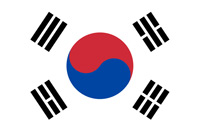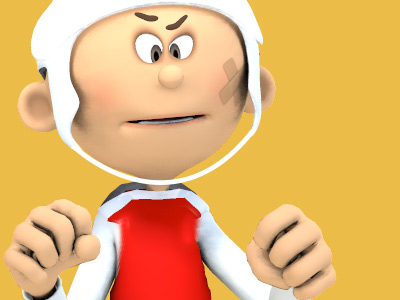Taekwondo

History of Taekwondo
The oldest Korean martial art was an amalgamation of unarmed combat styles developed by the three rival Korean Kingdoms of Goguryeo, Silla, and Baekje, where young men were trained in unarmed combat techniques to develop strength, speed, and survival skills. The most popular of these techniques was ssireum and subak with taekkyeon being the most popular of the segments of subak. The Northern Goguryeo kingdom was a dominant force in Northern Korea and North Eastern China prior to common era and again from the 3rd century to the 6th century CE. Before the fall of Goguryeo Dynasty 6th century CE, the Shilla Kingdom asked for help in training its people for defence against pirate invasions. During this time a few select Silla warriors were given training in taekkyeon by the early masters from Koguryo. These Shilla warriors then became known as the Hwarang. The Hwarang set up a military academy for the sons of royalty in Silla called Hwarang-do, which means "the way of flowering manhood." The Hwarang studied taekkyeon, history, Confucian philosophy, ethics, Buddhist morality, social skills and military tactics. The guiding principles of the Hwarang warriors were based on Won Gwang's five codes of human conduct and included loyalty, filial duty, trustworthiness, valor and justice. Taekkyeon was spread throughout Korea because the Hwarang traveled all around the peninsula to learn about the other regions and people.
In spite of Korea's rich history of ancient and martial arts, Korean martial arts faded into obscurity during the late Joseon Dynasty. Korean society became highly centralized under Korean Confucianism and martial arts were poorly regarded in a society whose ideals were epitomized by its scholar-kings. Formal practices of traditional martial arts such as subak and taekkyeon were reserved for sanctioned military uses. However, taekkyeon persisted into the 19th century as a folk game during the May-Dano festival and was still taught as the formal military martial art throughout the Joseon Dynasty.
Early progenitors of Taekwondo who were able to study in Japan were exposed to the Japanese martial arts, of karate, Judo and Kendo, while others were exposed to the martial arts of China and Manchuria as well as to the indigenous Korean martial art of taekkyeon.
When the occupation ended in 1945, Korean martial arts schools (kwans) began to open in Korea. There are differing views on the origins of the arts taught in these schools. Some believe that they taught martial arts that were based primarily upon the traditional Korean martial arts taekkyeon and subak, or that taekwondo was derived from native Korean martial arts with influences from neighboring countries. Still others believe that these schools taught arts that were almost entirely based upon karate.
In 1952, at the height of the Korean War, there was a martial arts exhibition in which the kwans displayed their skills. In one demonstration, Nam Tae Hi smashed 13 roof tiles with a punch. Following this demonstration, South Korean President Syngman Rhee instructed Choi Hong Hi to introduce the martial arts to the Korean army. By the mid-1950s, nine kwans had emerged. Syngman Rhee ordered that the various schools unify under a single system. The name "taekwondo" was submitted by either Choi Hong Hi (of the Oh Do Kwan) or Duk Sung Son (of the Chung Do Kwan), and was accepted on April 11, 1955. As it stands today, the nine kwans are the founders of taekwondo, though not all the kwans used the name. The Korea Taekwondo Association (KTA) was formed in 1959/1961 to facilitate the unification.
In the early 1960s, taekwondo made its debut worldwide with assignment of the original masters of taekwondo to various countries. Standardization efforts in South Korea South Korea officially the Republic of Korea (ROK), is a country in East Asia, constituting the southern part of the Korean Peninsula and sharing a land border with North Korea. Since the 21st century, South Korea has been renowned for its globally influential pop culture, particularly in music (K-pop), TV dramas (K-dramas) and cinema, a phenomenon referred to as the Korean wave. stalled, as the kwans continued to teach differing styles. Another request from the Korean government for unification resulted in the formation of the Korea Tae Soo Do Association, which changed its name back to the Korea Taekwondo Association in 1965 following a change of leadership. The International Taekwon-Do Federation was founded in 1966, followed by World Taekwondo Federation (WTF) in 1973 which was later renamed World Taekwondo (WT) in 2017.
South Korea officially the Republic of Korea (ROK), is a country in East Asia, constituting the southern part of the Korean Peninsula and sharing a land border with North Korea. Since the 21st century, South Korea has been renowned for its globally influential pop culture, particularly in music (K-pop), TV dramas (K-dramas) and cinema, a phenomenon referred to as the Korean wave. stalled, as the kwans continued to teach differing styles. Another request from the Korean government for unification resulted in the formation of the Korea Tae Soo Do Association, which changed its name back to the Korea Taekwondo Association in 1965 following a change of leadership. The International Taekwon-Do Federation was founded in 1966, followed by World Taekwondo Federation (WTF) in 1973 which was later renamed World Taekwondo (WT) in 2017.
Since 2000, taekwondo has been one of only two Asian martial arts (the other being judo) that are included in the Olympic Games; it became a demonstration event starting with the 1988 games in Seoul, and became an official medal event starting with the 2000 games in Sydney Australia Australia, officially the Commonwealth of Australia, is a sovereign country comprising the mainland of the Australian continent, the island of Tasmania, and numerous smaller islands. In 1770, the British explorer James Cook mapped and claimed the east coast of Australia for Great Britain, and the First British Fleet arrived in 1788 to establish the penal colony of New South Wales. Australia sent many thousands of troops to fight for Britain during WWI.. In 2010, taekwondo was accepted as a Commonwealth Games sport.
Australia, officially the Commonwealth of Australia, is a sovereign country comprising the mainland of the Australian continent, the island of Tasmania, and numerous smaller islands. In 1770, the British explorer James Cook mapped and claimed the east coast of Australia for Great Britain, and the First British Fleet arrived in 1788 to establish the penal colony of New South Wales. Australia sent many thousands of troops to fight for Britain during WWI.. In 2010, taekwondo was accepted as a Commonwealth Games sport.
One source has estimated that as of 2009, taekwondo was practiced in 123 countries, with over 30 million practitioners and 3 million individuals with black belts throughout the world. The South Korean government in the same year published an estimate of 70 million practitioners in 190 countries.
SPORTS

RESOURCES
This article uses material from the Wikipedia articles "Taekwondo", "Sparring", "Taekwondo Competition", "Referee", which is released under the Creative Commons Attribution-Share-Alike License 3.0.
© Stories Preschool. All Rights Reserved.








